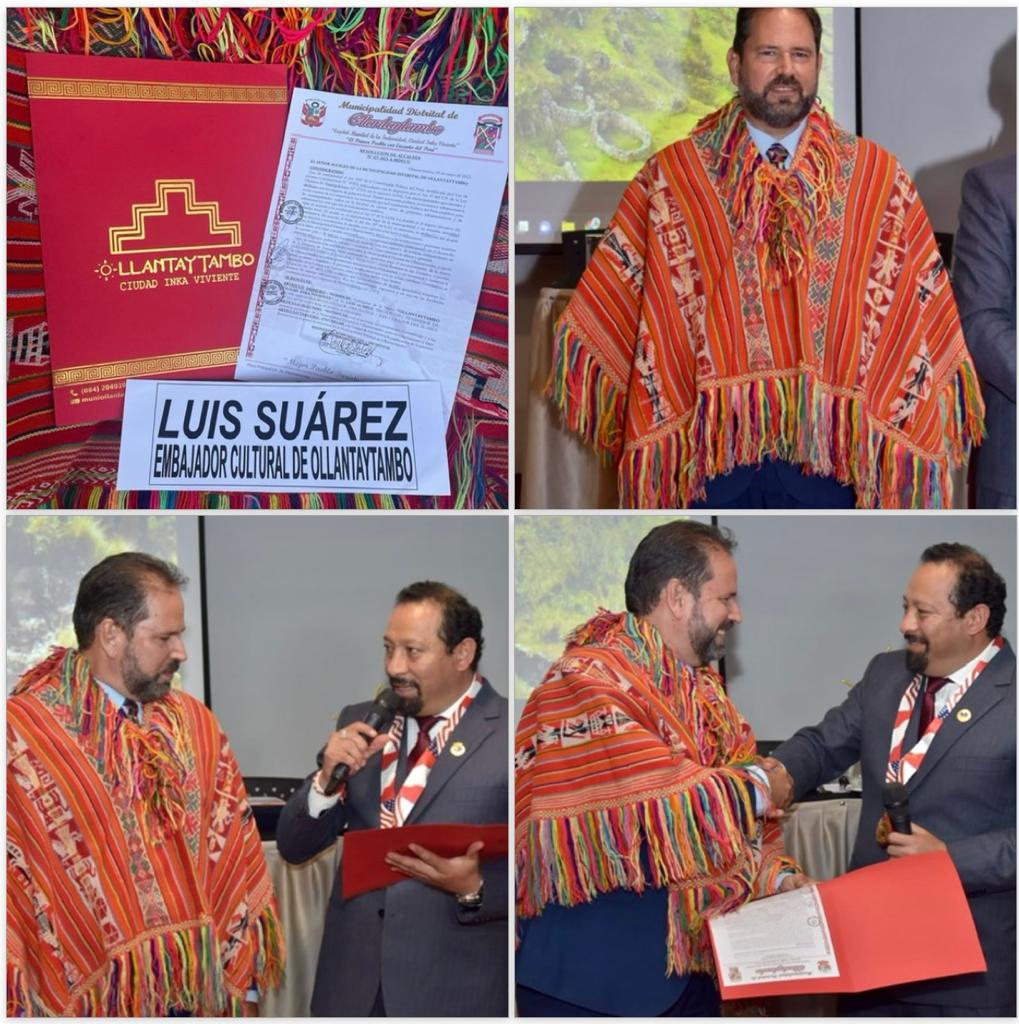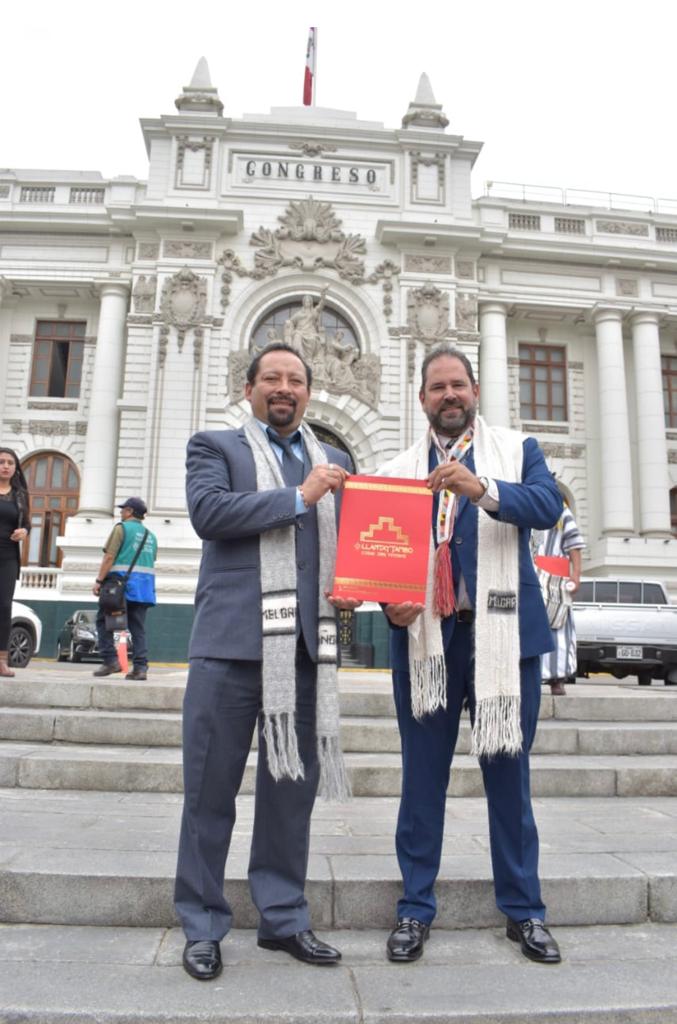

Mayor Paull Ferenk Palma Herrera of Ollantaytambo formally appointed Dr. Luis Suárez Hernández as Ambassador of the brand “OLLANTAYTAMBO LIVING INKA CITY” internationally on behalf of the District Municipality of Ollantaytambo with public resolution at Ollantaytambo, Province of Urubamba and Department of Cusco.
Dr. Suárez expressed gratitude to the Ollantaytambo (one of the Best Tourist Towns in the world). “This trophy has great meaning for Cusco and for Peru. With it they are recognizing the towns that are committed to making tourism an engine of development and well-being for their citizens”.
Ollantaytambo (in Quechua: Ullantaytampu, “Ollanta’s store or inn”) is a Peruvian town and Inca archaeological site, capital of the homonymous district located in the province of Urubamba, in the department of Cuzco. It is located about 90 km northwest of the city of Cuzco. During the Incas, Pachacútec conquered the region and built the town and a ceremonial center. At the time of the conquest it served as a fort for Manco Inca Yupanqui, leader of the Inca resistance. In Ollantaytambo there are resistance platforms (to avoid landslides), not agricultural as in the other archaeological sites of Cuzco. At present it is an important tourist attraction due to its Inca constructions and for being one of the most common starting points of the Inca trail to Machu Picchu.
Ollantaytambo is a typical example of the extraordinary urban planning of the Incas.
Its cobbled and winding streets, the ruins scattered everywhere and its agricultural terraces are attractions that stand out on their own and the visitor can appreciate it in all its splendor. Among the ruins, a visit to the old fortress and the temple is recommended, where we can appreciate magnificent views of the Sacred Valley of the Incas.
According to Pedro Sarmiento de Gamboa, a 16th-century Spanish chronicler, the Inca emperor Pachacútec conquered and destroyed Ollantaytambo and later incorporated it into his empire. Under the rule of the Incas, the town was rebuilt with splendid buildings and the valley of the Urubamba River was irrigated and provided with platforms; the town served as a shelter for the Inca nobility while the platforms were worked by yanaconas, servants of the emperor. After the death of Pachacútec, the region passed into the custody of his panaqa, his family group.
During the conquest, Ollantaytambo functioned as a temporary capital for Manco Inca Yupanqui, leader of the Inca resistance against the Spanish conquerors. Under his rule, the town and its surroundings were severely fortified in the direction of the former Inca capital of Cuzco, which had fallen under Spanish rule. On the Mascabamba plain, near Ollantaytambo, Manco Inca defeated a Spanish expedition, blocking its advance from a set of platforms and flooding the plain. However, despite his victory, Manco Inca did not consider it viable to remain in Ollantaytambo, so he withdrew into the thick forest of the Vilcabamba area. In 1540, the native population of Ollantaytambo was entrusted to Hernando Pizarro.
It is one of the most important and highly visited archaeological sites in Cusco. Recently, the Ministry of Foreign Trade and Tourism (Mincetur) mentioned that Ollantaytambo received a trophy that recognizes it as one of the Best Tourist Towns in the world. It is not the first time that the city of Cuzco has received recognition, since last year it was chosen as one of the best tourist towns at the XXIV General Assembly of the World Tourism Organization (UNWTO) in Spain. This recognition is called “Best Tourism Village” and is awarded by the World Tourism Organization (UNWTO). In this way, the UNWTO seeks to distinguish peoples from all over the world who have demonstrated their commitment to the promotion and conservation of their cultural heritage and to sustainable development through tourism.
It is one of the most monumental architectural complexes of the ancient Inca Empire, commonly called “Fortress”, due to its enormous walls, it was actually a Tambo or city-lodging, strategically located to dominate the Sacred Valley of the Incas.
The architectural type used, as well as the quality of each stone, worked individually (see image), make Ollantaytambo one of the most peculiar and surprising works of art that the ancient Peruvians made, especially the Temple of the Sun and its gigantic monoliths.
The straight, narrow and picturesque streets today form fifteen blocks of houses located to the north of the main square of the city, which constitute in themselves a true historical legacy. Some colonial-type houses are built on beautiful, finely polished Inca walls. The tones of the stone are cheerful, the color of a petrified flower, dark pink. In the main square, a large block with perfect edges fits its fifteen terrestrial star angles into a double row.
It was declared an Archaeological Park with the National Directorial Resolution No. 395 of the year 2002. It has an extension of 34,800 hectares.
Ollantaytambo was recognized by Time magazine as one of the 50 best places in the world in 2023.




Comments are closed